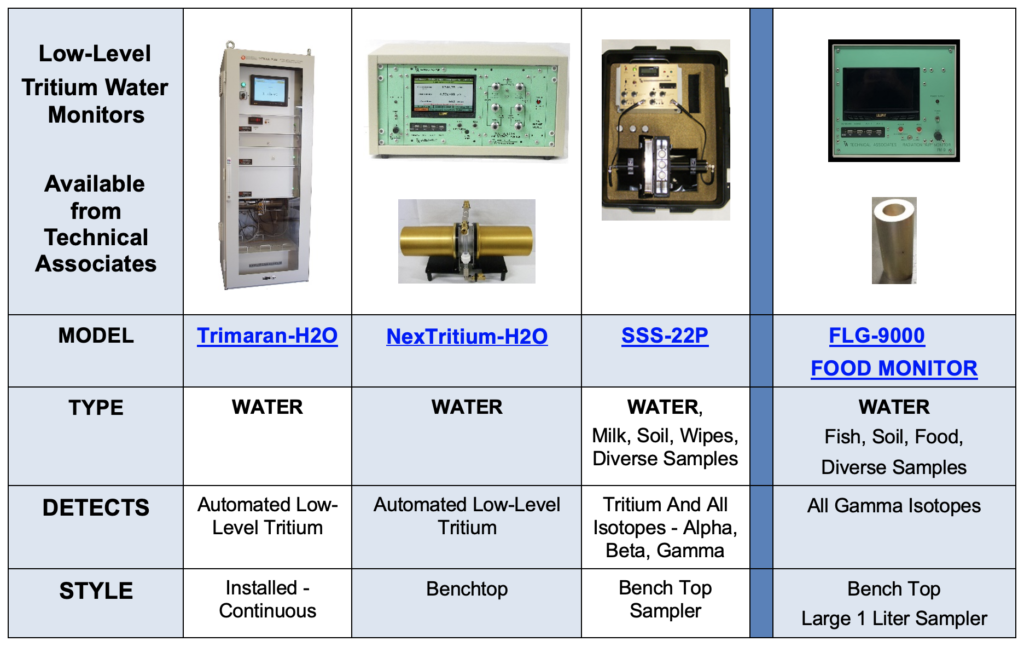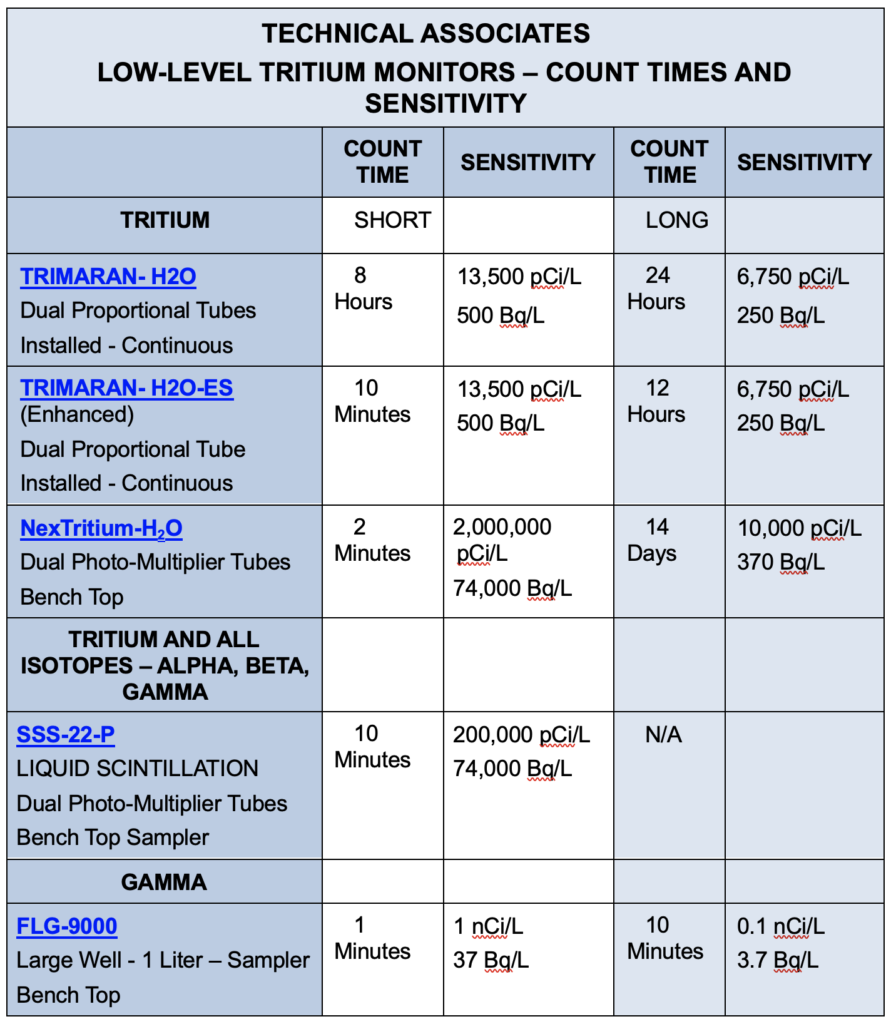Fukushima Daiichi Plant Tritiated Water Ocean Discharge
Fukushima Daiichi Plant Tritiated Water Ocean Discharge
Low-level Tritium In Water Monitors
The Fukushima Daiichi plant began the controversial discharge of treated and diluted wastewater into the Pacific Ocean on Aug. 24, and the first release has been completed. Such discharge will continue for an estimated 40 years as part of the plant’s decommissioning. This release is being strongly protested due to anticipated environmental impacts.
The Fukushima release of tritiated water into the ocean is by guidelines from the IAEA (International Atomic Energy Agency). The large volume of water containing small amounts of Tritium makes recovery of Tritium by the Advanced Liquid Processing System (ALPS) not technically possible.
Tritium is very hard to detect in water at the best of times—the low volume of Tritium in such a large volume of water to be released compounds the problem. The release of Fukushima-treated recovery water by the Advanced Liquid Processing System (ALPS) will be discharged into the ocean subject to domestic regulatory controls and oversight by the IAEA.
Many radioactive nuclides from the Fukushima plant are in the environment in addition to Tritium in water. These radioactive contaminants may be found in the soil, plants, and food on land and sea. This level of hazard to the environment and population requires detection and attention once detected.
Technical Associates provides susceptible portable and inline Tritium detection and monitoring instruments for low Tritium rates in water, such as the Fukushima discharge. With such detection and monitoring, adjacent countries to the ocean discharge by Japan and Japan itself can take cautionary action. Measurement of tritiated water and any additional radionuclides in plants, soil, and food in the affected environment is possible with instruments from Technical Associates.


Safe Harbor Act
This press release includes “forward-looking statements” within the meaning of the safe harbor provisions of the United States Private Securities Litigation Reform Act of 1995. Actual results may differ from expectations, estimates, and projections and, consequently, you should not rely on these forward-looking statements as predictions of future events. Words such as “expect,” “estimate,” “project,” “budget,” “forecast,” “anticipate,” “intend,” “plan,” “may,” “will,” “could,” “should,” “believes,” “predicts,” “potential,” “continue,” and similar expressions are intended to identify such forward-looking statements. These forward-looking statements involve significant risks and uncertainties that could cause the actual results to differ materially from the expected results.
Investors may find additional information regarding US Nuclear Corp. at the SEC website at http://www.sec.gov.
CONTACT: US Nuclear Corp. (UCLE)
Robert I. Goldstein, President, CEO, and Chairman
Rachel Boulds, Chief Financial Officer
(818) 883 7043
Email: info@usnuclearcorp.com
Reprinted with permission from US Nuclear Corp

 PFAS chemicals are the ‘forever’ chemicals often in the news. Detection of PFAS chemicals is challenging and has been typically an expensive and laboratory-intensive process. Federal regulations are being reviewed and implemented, such as the elimination of PFAS in firefighting foam.
PFAS chemicals are the ‘forever’ chemicals often in the news. Detection of PFAS chemicals is challenging and has been typically an expensive and laboratory-intensive process. Federal regulations are being reviewed and implemented, such as the elimination of PFAS in firefighting foam.